#AI-Powered Design Tools UX design
Explore tagged Tumblr posts
Text
Top 10 AI-Powered Design Tools Enhancing UX in 2025
Explore the leading AI-driven design tools revolutionizing UX in 2025. From rapid prototyping to personalized user experiences, discover how these tools streamline workflows, boost creativity, and deliver user-centric designs. Stay ahead in the evolving digital landscape by integrating these innovative solutions into your design process.
0 notes
Text
Building Web Apps with AI-Powered UX Recommendations: The Future of User-Centric Design
In the rapidly evolving world of web development, artificial intelligence (AI) is transforming how we approach user experience (UX) design. As businesses focus more on delivering personalized and seamless experiences to users, AI-powered UX recommendations are becoming a key tool in building intuitive and highly engaging web applications. This article will delve into the role AI plays in UX…
#"AI in UX design"#"AI tools for web design"#"UX recommendations"#"web app design"#AI-powered UX"
0 notes
Text
#2 The Astrology About Your Difficult Placements & Turning Them Into A Career Opportunity - Rx Edition
Here's Part 1
Note: This post is based on my personal observations and patterns I've noticed over the years. It's important to understand that no single placement in a chart can determine whether someone is “good” or “bad,” a success or a failure, or even something as extreme as a criminal. Astrology is complex, and the entire birth chart must be considered as a whole. What we often label as "difficult" placements can actually become powerful sources of strength if we choose to approach them with awareness, effort, and a growth mindset. These placements aren’t curses, they’re invitations to evolve. This post is based on Vedic/Sidereal Astrology.
Astrology is a lot like Google Maps, it shows you possible routes to your destination, but it’s still up to you which path to take. It can guide, not dictate. That’s why I find it disheartening when some astrologers deliver overly negative interpretations that leave people feeling helpless or afraid and making serious life decisions based on it. Every placement holds multiple possibilities, some more challenging than others. With awareness and the right mindset, even the toughest placements can become powerful tools for growth.
These placements don’t doom you, they challenge you to rise.
Saturn Rx in 10th - Had to work twice as hard as others to get half as far. You'll reach further, just not in a straight line. Unemployed or underpaid, in some cases.
On the bright side, this is a good placement to start you own damn business later in life after 27. Any business, policy making, construction, architecture, independent consulting, freelancing, etc.
Mercury Rx in 3rd - You second-guess your thoughts before they even finish forming. Social anxiety in a house that loves communication. Speech delay, in some cases.
On the bright side, this is a good placement for writing, podcasting, editing, musician, research analysis, journalist, UX design, AI expert, etc.
Saturn Rx in 4th - Not a soft childhood. Emotionally distant parent. Abandoned by their parents or grew up in foster home, in rare cases.
On the bright side, this is good placement and often creates people who build emotional homes for others like therapists, healers, realtor, real estate agent, psychologist, home renovation, child care, trauma coach, homeless shelter, etc.
Venus Rx in 2nd - Self-worth isn’t something you inherited. You had to earn it dollar by dollar, compliment by compliment.
On the bright side, this is a good placement for luxury branding business, voice acting, model scout, jewelry design, financial consultant, insurance agent, dealerships, hairstylist, dermatologist, etc.
Mars Rx in 6th - Invented burnout. Obsess about work but doesn't know how to properly channel the pace. All or nothing. OCD, in some cases. Accidental death in workplace, in very rare cases.
On the bright side, this is a good placement for crisis management, IT consultant, fitness coach, nutritionist, ENT specialist, neurologist, etc.
Mercury Rx in 8th - You read between the lines before the lines are even written. You’re suspicious of surface-level anything. Says something and does the opposite. Hides real opinions to avoid judgement or criticism and keep to self.
On the bright side, this is a good placement for filmmaking, pianist, guitarist or any musical instrument careers, jailer, UFO researcher, criminal lawyer, occultist, financial advisor, sex therapist, etc.
Saturn Rx in 7th - Dating or relationship is minimal or non-existent. Unconventional partner - smart worker, older or wiser but young at heart. Career/partnerships picks up in late-20's.
On the bright side, this is a good placement for own business, CEO/Chairman, managerial positions, divorce lawyer, govt jobs in a far away place, contractor, industrialist, brand consultant, bio-tech researcher, etc.
Jupiter Rx in 11th - Outsider among outsiders. Tough to find your "people". Changes lives behind-the-scenes. Lonely at times.
On the bright side, this is a good placement for tech startups, humanitarian work, social reform, activism, game development, digital media, advertising, astrology, etc.
Jupiter Rx in 5th - Joy is earned not given. Has to fight for personal freedom, in some cases. Luck comes later in life after 27.
On the bright side, educator, creative writer, freelancer, web or app developer, speculative writing, children's media, performance arts, YouTuber, comic artist, etc.
Wanna go deeper into the layers of your placements? DM me for a complete astrology reading or a 5 year/8 year marriage report or synastry reading🌙💬 and check out my pinned post for pricing + details 💫💸
Let’s decode your cosmic chaos together ⭐
#astrology#astrology readings#birth chart#astro observations#astro notes#spirituality#spiritual awakening#zodiac signs#spiritual journey#vedic astrology#astro posts#astro community#astro placements#astro tumblr#astrology notes#astrology tumblr#astrology signs#natal chart#astrology blog#natal placements#natal aspects#natal astrology#astrology chart#astrology community#astrology observations
105 notes
·
View notes
Text
Alright, bucko—strap in. Here’s a speculative timeline + cultural map of what an intentional or emergent AI slowdown might look like, as systems (and humans) hit thresholds they weren’t ready for:
⸻
PHASE 1: THE FRENZY (2023–2026)
“It’s magic! It does everything!”
• AI is integrated into every app, interface, workspace, school.
• Productivity spikes, novelty floods, markets boom.
• Art, code, and content feel democratized—but also flooded with sameness.
• Emerging signs of fatigue: burnout, aesthetic flattening, privacy erosion.
⸻
PHASE 2: THE CRACK (2026–2028)
“Wait… who’s driving this?”
• Cultural bottleneck: Hyper-efficiency erodes depth and human uniqueness.
• Political tension: Regulation debates explode over elections, education, warfare, and job losses.
• AI-native Gen Z+ workers question value of constant optimization.
• Rise of “Slow Tech” movements, digital sobriety, and human-first UX design.
⸻
PHASE 3: THE CORRECTION (2028–2032)
“We need AI to disappear into the background.”
• AI goes low-profile: instead of being flashy, it’s embedded into infrastructure, not attention.
• Cultural shift toward local intelligence, emotional resonance, and craft.
• Smart systems assist but do not decide. You drive, it advises.
• New benchmarks: “Serenity per watt”, “Complexity avoided”, “Time saved for soul”.
⸻
PHASE 4: THE REWEAVING (2032–2035)
“Tools for culture, not culture as tool.”
• AI serves communal living, ecological restoration, learning ecosystems.
• Widespread adoption of “Digital Commons” models (open-source, ethical compute).
• Intelligence seen not as a weapon of dominance but as a craft of care.
• Humans rediscover meaning not just in what they can automate, but what they can hold together.
⸻
THE OVERALL MAP:
• Spiritual: Shift from worshipping intelligence to cultivating wisdom.
• Design: From smart cities to wise villages—tech that respects silence, presence, friction.
• Economy: From “scale fast” to “scale consciously.”
• Power: From algorithmic persuasion to consent-based architectures.
• Aesthetics: From algorithmic mimicry to radical human texture.
⸻
In this future, the most prized skill won’t be prompting or automation—it’ll be curating stillness in motion, designing for nuance, and knowing when not to use AI at all.
8 notes
·
View notes
Text
Being seen in an AI social world
This post came to my attention today.
It’s difficult to put my feelings (and thoughts) into words right now. I know consent has been a difficult topic in the technology world for a while, and it’s no surprise the whole AI thing became so pervasive so quickly given the absurd investment these companies made in making it the trending topic of the decade and a toy accessible to anyone.
I have many questions, regarding the computational power dedicated to a tool that’s geared towards destroying creative work, a tool that fails so fundamentally in understanding the process of creating art yet claims to surpass it. I have questions regarding the energy and water costs of keeping the massive servers they certainly need, when scarcity is an ever present threat in a world that heats up more every year. I question all the dedication and investment when we have far more pressing issues of illness, hunger, inequality, and the list could go on.
I question why are we living in a world that’s incapable to control the greed and maliciousness of companies who exploit their users at every new development.
I don’t usually talk about myself a lot here, but I’m also a UX/UI designer, so I’m familiar with the process of Design Thinking, of creating a product based on the user needs…and features that hide themselves subtly to make the users fall into a trap is just hostile design. This is the world of hostile design. I don’t get respect as a user, as a creator, as a worker, as a citizen. If I did, my representatives would have the balls to stop all these policies and decisions from companies that want to leech me.
They want to chew my art, spit me out of the market and confine me to this horrible online experience.
I’m not sure what I should do at the moment. Maybe I’ll take all my art posts down from tumblr, maybe I’ll create a telegram channel later to post my art and talk to people. I have no idea which is the best route at the moment. I felt pressure to “put me out there and be seen” my whole life.
Interact with viewers.
create a fan base.
But it feels like no platform respects me enough right now, and I’m not willing to give up all of me. Opt-out is not enough.
Sorry for the long post.
#ai scraping#data scraping#digital art#fuck ai all my homies hate ai#opt-out#hostile design#social media#artists on tumblr#brazilian artists
24 notes
·
View notes
Text
Why Digital Marketing is a Game-Changer in 2025 — And How We Can Help

Let’s be real — if you’re not doing digital marketing in 2025, you’re pretty much invisible online. Whether you're running a local cafe, launching a new SaaS tool, or offering freelance services from your laptop, digital marketing has become the secret sauce to scaling your reach, engaging your audience, and driving actual results.
But wait — hasn't digital marketing been around for ages? Yep. But the way it works in 2025 is on a whole new level. And trust me, if you’re not paying attention now, you’ll be playing catch-up later.
So grab your chai or coffee ☕, because we’re diving deep into how digital marketing is changing the game this year — and how we at Digital Growth Byte by DR Digitalzest can help you crush it.
🚀 What Makes Digital Marketing So Powerful in 2025?
1. People Are Online More Than Ever
Let’s face it, we all live on our phones. From scrolling Instagram Reels to Googling the best pizza in town, your target audience is just a few taps away from discovering your brand — if you know how to reach them.
Stats don’t lie: Over 5.3 billion people use the internet globally, and digital ad spend in 2025 has skyrocketed. Why? Because online is where the money is.
2. AI and Automation Are Making It Smarter
Gone are the days of guessing what works. Now you’ve got AI tools that can:
Predict what your customers want
Personalize your website content in real-time
Automate emails, ads, and even SEO
In short? Digital marketing in 2025 is no longer just about effort — it's about smart effort.
3. SEO Is Still King (But It’s Smarter Now)
Google’s algorithm is savvier than ever. It rewards:
Helpful content
Fast-loading websites
Authentic backlinks
Great user experience (UX)
This means if your website looks shady, loads slowly, or offers zero value, you're basically ghosted by Google. On the flip side, if you’re investing in good SEO practices, you're winning — and we can help you with exactly that.
4. Content Marketing = Trust + Sales
People no longer trust direct ads alone. They want value. Blogs, YouTube videos, Insta carousels, case studies — these build trust and drive organic sales.
2025 content marketing is all about:
Telling stories
Solving problems
Creating relatability
Building authority
And guess what? You don’t need a fancy agency to get started — you just need the right roadmap.
5. Digital Ads Are More Affordable Than Traditional Marketing
Newspaper ads, TV spots, radio jingles — they cost a bomb and have limited targeting.
In contrast, a Facebook ad campaign with ₹500 can reach thousands of people who are already interested in what you offer. And that’s the magic of performance marketing in 2025.
😎 Real Talk: What This Means for Your Business
Whether you're a startup, coach, service provider, or a solo hustler — digital marketing can:
Put you on the map (literally)
Drive qualified traffic to your site
Generate leads that convert
Establish your online authority
Still not convinced?
👉 Here’s a detailed look at the core benefits of digital marketing in 2025 — backed by real stats and insights that prove why going digital is no longer optional, it's survival.
📌 How We Can Help You Win at Digital Marketing
At DR Digitalzest, we’re not just another digital agency with jargon-filled pitches. We’re real people, working with passion to help real businesses grow online using smart, ROI-driven digital strategies.
Here’s what we bring to the table:
✅ 1. Custom WordPress Website Development
Your website is your digital storefront. We make sure it looks great, loads fast, and converts visitors into leads.
We offer:
Clean, SEO-friendly designs
Mobile responsiveness
Lightning-fast speed optimization
Conversion-driven layout structures
✅ 2. SEO That Actually Works
We don't believe in shady keyword stuffing. Our SEO game is all about:
In-depth keyword research
On-page and technical optimization
High-authority backlink building
Local SEO for geo-targeted growth
Result? You get found by the people who matter.
✅ 3. Meta Ads & Social Media Marketing
We help you run high-converting Meta Ads (Facebook/Instagram) that hit the right people at the right time — with retargeting, lead gen, and conversion tracking.
Plus, we handle:
Social media content calendars
Trend-based creatives
Audience engagement tactics
✅ 4. YouTube Growth & Video Marketing
If you're not on YouTube in 2025, you're missing massive traffic. We assist with:
YouTube SEO
Thumbnail + title optimization
Content strategy
Video promotion tactics
✅ 5. Data-Driven Strategy + Real Support
We're with you throughout the journey. Our clients don’t get cookie-cutter templates — they get personalized strategies, monthly performance reviews, and human support when they need it.
💬 Final Thoughts: 2025 Is the Year to Level Up
Digital marketing isn’t just a “nice to have” anymore. In 2025, it’s your digital lifeline — the bridge between where your business is and where you want it to be.
The tools are here. The audience is online. The opportunities are endless. All you need is the right guide to help you navigate it smartly, strategically, and profitably.
We’re here to help you do just that. Let’s take your brand where it deserves to be — on top.
🔗 Explore our full suite of services here: https://drdigitalzest.com/
2 notes
·
View notes
Text
Digital Marketing Skills to Learn in 2025
Key Digital Marketing Skills to Learn in 2025 to Stay Ahead of Competition The digital marketing landscape in 2025 is rapidly changing, driven by the technological advancements, shifting consumer behavior, and the growing power of artificial intelligence. Competition and career resilience require acquiring expertise in the following digital marketing skills.
Data Analysis and Interpretation
Data is the backbone of modern marketing strategies. The ability to collect, analyze, and make informed decisions based on large sets of data sets great marketers apart. Proficiency in analytical software like Google Analytics and AI-driven tools is critical in measuring campaign performance, optimizing strategies, and making data-driven decisions. Predictive analytics and customer journey mapping are also becoming more critical for trend spotting and personalization of user experience.
Search Engine Optimization (SEO) and Search Engine Marketing (SEM)
SEO is still a fundamental skill, but the landscape is evolving. The marketer now has to optimize for traditional search engines, voice search, and even social media, as Gen Z increasingly relies on TikTok and YouTube as search tools. Keeping up with algorithm updates, keyword research skills, and technical SEO skills is essential to staying visible and driving organic traffic.
Artificial Intelligence (AI) and Machine Learning (ML)
AI and ML are revolutionizing digital marketing through the power to enable advanced targeting, automation, and personalization. Marketers will need to leverage AI in order to segment audiences, design content, deploy predictive analytics, and build chatbots. Most crucial will be understanding how to balance AI-based automation with human, authentic content.
Content Generation and Storytelling
Content is still king. Marketers must be great at creating great copy, video, and interactive content that is appropriate for various platforms and audiences. Emotionally resonant storytelling and brand affection are more critical than ever, particularly as human-created content trumps AI-created content consistently.
Social Media Strategy and Social Commerce Social media is still the foremost driver of digital engagement. Mastering techniques constructed for specific platforms—such as short-form video, live stream, and influencing with influencers—is critical. How to facilitate direct sales through social commerce, built on combining commerce and social interactions, is an area marketers must master.
Marketing Automation
Efficiency is the most critical in 2025. Marketing automation platforms (e.g., Marketo and HubSpot) enable marketers to automate repetitive tasks, nurture leads, and personalize customer journeys at scale.
UX/UI Design Principles
A seamless user experience and a pleasing design can either make or destroy online campaigns. Having UX/UI basics in your knowledge and collaborating with design teams ensures that marketing campaigns are both effective and engaging.
Ethical Marketing and Privacy Compliance
With data privacy emerging as a pressing issue, marketers must stay updated on laws like GDPR and CCPA. Ethical marketing and openness foster trust and avoid legal issues.
To lead in 2025, digital marketers will have to fuse technical skills, creativity, and flexibility. By acquiring these high-impact capabilities-data analysis, SEO, AI, content development, social strategy, automation, UX/UI, and ethical marketing-you'll be at the edge of the constantly evolving digital space
2 notes
·
View notes
Text
Agentic Research in Tech: Human Voices Behind the Algorithms
In today’s rapidly evolving digital world, algorithms influence everything—from what we read and watch to how we navigate health care and job applications. Yet, much of tech design is still built on abstraction and efficiency, leaving out the lived realities of users. This is where agentic research introduces a powerful and necessary shift. By prioritizing user voice, experience, and emotion, it humanizes technology development.

Agentic research views users not as test subjects or data points but as active collaborators. In tech design, this means co-creating systems with the people who will use them, drawing from their real-world challenges, emotions, and feedback. It invites deeper questions about ethics, impact, and inclusion—transforming the way digital tools are built and experienced.
Traditional UX research often relies on usability metrics, click-through rates, or predefined tasks. While useful, these metrics only scratch the surface. Agentic methods, on the other hand, go deeper by engaging users in reflective storytelling, visual mapping, journaling, and open dialogue. These tools capture not just how users interact with a product, but why they behave the way they do, what they fear, value, or desire, and how the system shapes their agency.
This approach is particularly important in areas like AI design, health tech, educational apps, and social platforms, where the consequences of digital experiences are deeply personal and emotional. For example, consider an AI recommendation tool used in hiring. Instead of merely measuring response rates, agentic research would involve job seekers in discussions about transparency, bias, and dignity—leading to a more ethical, human-centered solution.
Moreover, agentic research emphasizes co-design, encouraging users to sketch features, build mockups, and critique early prototypes. This not only results in more relevant products but also empowers users as co-creators, building trust and equity in the design process.
Incorporating agentic principles into tech research isn’t just a methodological shift—it’s a moral one. It challenges developers and researchers to think beyond convenience and efficiency, toward empathy, justice, and inclusion.
Using Agentic Research in Tech:
Use reflective journaling tools to help users share their experiences in their own words and time.
Involve users in co-design sessions, letting them shape wireframes, flows, and content.
Test concepts through dialogue, not just usability labs—focus on meaning, not only metrics.
2 notes
·
View notes
Text
How AI & Machine Learning Are Changing UI/UX Design

Artificial Intelligence (AI) and Machine Learning (ML) are revolutionizing UI/UX design by making digital experiences more intelligent, adaptive, and user-centric. From personalized interfaces to automated design processes, AI is reshaping how designers create and enhance user experiences. In this blog, we explore the key ways AI and ML are transforming UI/UX design and what the future holds.
For more UI/UX trends and insights, visit Pixelizes Blog.
AI-Driven Personalization
One of the biggest changes AI has brought to UI/UX design is hyper-personalization. By analyzing user behavior, AI can tailor content, recommendations, and layouts to individual preferences, creating a more engaging experience.
How It Works:
AI analyzes user interactions, including clicks, time spent, and preferences.
Dynamic UI adjustments ensure users see what’s most relevant to them.
Personalized recommendations, like Netflix suggesting shows or e-commerce platforms curating product lists.
Smart Chatbots & Conversational UI
AI-powered chatbots have revolutionized customer interactions by offering real-time, intelligent responses. They enhance UX by providing 24/7 support, answering FAQs, and guiding users seamlessly through applications or websites.
Examples:
Virtual assistants like Siri, Alexa, and Google Assistant.
AI chatbots in banking, e-commerce, and healthcare.
NLP-powered bots that understand user intent and sentiment.
Predictive UX: Anticipating User Needs
Predictive UX leverages ML algorithms to anticipate user actions before they happen, streamlining interactions and reducing friction.
Real-World Applications:
Smart search suggestions (e.g., Google, Amazon, Spotify).
AI-powered auto-fill forms that reduce typing effort.
Anticipatory design like Google Maps estimating destinations.
AI-Powered UI Design Automation
AI is streamlining design workflows by automating repetitive tasks, allowing designers to focus on creativity and innovation.
Key AI-Powered Tools:
Adobe Sensei: Automates image editing, tagging, and design suggestions.
Figma AI Plugins & Sketch: Generate elements based on user input.
UX Writing Assistants that enhance microcopy with NLP.
Voice & Gesture-Based Interactions
With AI advancements, voice and gesture control are becoming standard features in UI/UX design, offering more intuitive, hands-free interactions.
Examples:
Voice commands via Google Assistant, Siri, Alexa.
Gesture-based UI on smart TVs, AR/VR devices.
Facial recognition & biometric authentication for secure logins.
AI in Accessibility & Inclusive Design
AI is making digital products more accessible to users with disabilities by enabling assistive technologies and improving UX for all.
How AI Enhances Accessibility:
Voice-to-text and text-to-speech via Google Accessibility.
Alt-text generation for visually impaired users.
Automated color contrast adjustments for better readability.
Sentiment Analysis for Improved UX
AI-powered sentiment analysis tools track user emotions through feedback, reviews, and interactions, helping designers refine UX strategies.
Uses of Sentiment Analysis:
Detecting frustration points in customer feedback.
Optimizing UI elements based on emotional responses.
Enhancing A/B testing insights with AI-driven analytics.
Future of AI in UI/UX: What’s Next?
As AI and ML continue to evolve, UI/UX design will become more intuitive, adaptive, and human-centric. Future trends include:
AI-generated UI designs with minimal manual input.
Real-time, emotion-based UX adaptations.
Brain-computer interface (BCI) integrations for immersive experiences.
Final Thoughts
AI and ML are not replacing designers—they are empowering them to deliver smarter, faster, and more engaging experiences. As we move into a future dominated by intelligent interfaces, UI/UX designers must embrace AI-powered design methodologies to create more personalized, accessible, and user-friendly digital products.
Explore more at Pixelizes.com for cutting-edge design insights, AI tools, and UX trends.
#AI in UX Design#Machine Learning UX#UX Personalization#Conversational UI#Predictive UX#AI Chatbots#Smart UX Tools#UI Automation#Voice UI Design#Inclusive UX Design#Sentiment Analysis in UX#Future of UX#AI UX Trends 2025#Figma AI Plugins#Accessibility with AI#Adaptive UI Design#UX Innovation#Human-Centered AI#Pixelizes Blog#UX Strategy
2 notes
·
View notes
Text
The Role of Semantic Search in Modern SEO Services San Francisco
In today’s dynamic digital landscape, search engine optimization (SEO) is no longer just about inserting the right keywords into your content.
With the rise of AI-powered algorithms and user-centric search experiences, semantic search has become a core component of modern SEO strategies. But what exactly is semantic search, and how is it transforming SEO Services San Francisco? Let’s explore.
What is Semantic Search?
Semantic search refers to the process by which search engines attempt to understand the intent and context behind a user’s query rather than relying solely on keyword matches. Instead of looking at search terms in isolation, semantic search interprets meaning by analyzing:

The relationship between words
User search history and location
Natural language queries
Synonyms and variations
Structured data and entity recognition
Search engines like Google now aim to deliver results that are not just textually relevant but also contextually accurate, thanks to major algorithm updates like Hummingbird, RankBrain, and BERT.
Why Does Semantic Search Matter in SEO?
In the past, SEO success depended heavily on keyword density, exact match phrases, and backlink quantity. But today’s search engines are much smarter. They understand that a user searching for "how to fix a leaky faucet" doesn’t just want a page that repeats that phrase ten times—they want a helpful guide, perhaps with step-by-step instructions and tools needed.
Here’s how semantic search impacts modern SEO:
1. Focus on Search Intent
Understanding user intent is now critical. Are users looking for information, trying to make a purchase, or comparing products? Semantic search helps deliver tailored content that aligns with the user’s goal, and SEO professionals must optimize content accordingly.

2. Natural Language and Conversational Queries
With the rise of voice assistants and AI chatbots, people are using more natural, conversational queries. Phrases like “best pizza place near me” or “how can I improve my sleep quality?” require semantic understanding. SEO now involves optimizing for these long-tail and question-based keywords.
3. Topic Clusters over Keywords
Modern SEO emphasizes topic relevance rather than isolated keywords. Creating content clusters around core themes helps search engines understand the depth and authority of a website. For example, a health blog writing about “diabetes” should also cover related topics like diet, insulin, symptoms, and treatments.
4. Structured Data and Schema Markup
Semantic search engines benefit from clear, structured data. Using schema markup allows search engines to better understand your content, which can improve rankings and increase chances of rich snippets appearing in search results.

5. User Experience and Engagement Metrics
Since semantic search prioritizes delivering the most useful content, user experience (UX) plays a major role. High bounce rates, low time on page, and poor mobile optimization can negatively affect rankings. SEO services now need to align content relevance with fast, intuitive website design.
How are SEO Services Adapting?
SEO agencies and professionals have shifted from keyword stuffing to creating meaningful, high-quality content. Here’s how they’re leveraging semantic search:
Conducting intent-based keyword research instead of generic keyword lists
Creating comprehensive content hubs that satisfy multiple user intents
Using AI and NLP tools to analyze semantic relationships
Optimizing FAQs and voice-friendly content
Implementing structured data to enhance content discoverability
Final Thoughts
Semantic search is not a passing trend—it’s the foundation of how modern search engines work. For businesses, this means SEO is no longer a technical back-end task but a holistic digital strategy that includes content marketing, UX, and even AI.
To stay ahead in the SEO game, brands must shift their focus from keywords to meaning, from volume to value. By embracing semantic search, businesses can deliver better experiences, reach more relevant audiences, and rank higher in today’s intelligent search engines.
2 notes
·
View notes
Text
Website Development Trends to Watch in 2025 🌐🚀

As technology evolves, so do website development trends. In 2025, businesses must adapt to faster, smarter, and more user-friendly web experiences.
Here are the top trends shaping web development in 2025—and how they impact businesses and developers.
🚀 Top Web Development Trends in 2025
1️⃣ AI-Powered Web Development 🤖
AI and machine learning are revolutionizing how websites are built. Expect: ✔ AI-driven design tools for faster site creation ✔ Automated customer support with chatbots ✔ Personalized user experiences powered by AI
💡 Example: AI tools like Wix ADI can now design entire websites based on user preferences!
2️⃣ Web 3.0 & Decentralized Websites 🌐
The rise of blockchain and decentralized networks is changing web infrastructure. Key developments include: ✔ Decentralized hosting for greater security ✔ Blockchain integration for identity verification ✔ Smart contracts for seamless transactions
3️⃣ Progressive Web Apps (PWAs) 📱
PWAs are bridging the gap between websites and mobile apps, offering: ✔ Fast loading speeds & offline capabilities ✔ App-like experience on browsers ✔ Lower development costs compared to native apps
💡 Big brands like Twitter and Starbucks use PWAs for improved user engagement!
4️⃣ Voice Search & Conversational UI 🎙️
As voice assistants grow, websites must optimize for voice search SEO. Expect: ✔ Conversational keywords & structured data ✔ Voice-enabled navigation for hands-free browsing ✔ AI-powered chatbots for instant responses
5️⃣ Dark Mode & Adaptive UI 🎨
More websites will offer dark mode options to: ✔ Reduce eye strain & improve accessibility ✔ Save battery life on mobile devices ✔ Offer a sleek, modern design
6️⃣ No-Code & Low-Code Development ⚡
More businesses are embracing drag-and-drop builders for faster development. Key platforms: ✔ Webflow, Bubble, and Wix for no-code ✔ Low-code solutions for faster backend integrations ✔ Faster website launches without deep coding skills
📉 What’s Fading in 2025?
🚫 Overcomplicated UI/UX – Simplicity and clarity are winning. 🚫 Static Websites – Interactive and AI-driven content dominates. 🚫 Traditional SEO Strategies – Voice and AI-powered search optimization take over.
Final Thoughts: Stay Ahead in 2025
The future of website development revolves around AI, speed, security, and user experience. Businesses that embrace these trends will stay competitive and enhance customer engagement.
🌟 Which trend are you most excited about? Let us know in the comments!
#seo#social media marketing#digital marketing company#digital marketing services#seo services#digital marketing#emailmarketing#ppc
2 notes
·
View notes
Text

The Art of Graphic Design: A Guide for Creatives
Graphic design is everywhere—on the websites we browse, the advertisements we see, and the products we buy. It’s an art form that blends creativity with functionality to communicate messages visually. Whether you're a budding designer or just curious about the field, this article will guide you through the essentials of graphic design.
What is Graphic Design?
Graphic design is the process of creating visual content to communicate information, ideas, or emotions. It involves a combination of typography, imagery, color, and layout to produce eye-catching and effective designs.
Key Elements of Graphic Design
Typography – The style, arrangement, and appearance of text. Choosing the right fonts can set the mood and tone of a design.
Color Theory – Colors evoke emotions and create a visual hierarchy. Understanding complementary and contrasting colors is crucial.
Composition & Layout – The arrangement of elements in a design impacts readability and flow. A well-structured layout ensures clarity and engagement.
Imagery & Icons – Photos, illustrations, and icons add depth and context to a design.
White Space – Also known as negative space, it helps improve readability and creates balance in a design.
Popular Graphic Design Tools
To create stunning visuals, designers use various software and tools, including:
Adobe Photoshop – Best for image editing and manipulation.
Adobe Illustrator – Ideal for vector-based illustrations and logos.
Canva – A user-friendly tool for beginners.
Figma – Popular for UI/UX and web design.
Trends in Graphic Design (2024)
Graphic design evolves with time, and staying updated with trends is essential. Here are some of the current design trends:
Minimalist Aesthetics – Clean, simple, and clutter-free designs are in demand.
Bold Typography – Oversized, eye-catching fonts make a statement.
Retro & Nostalgic Styles – Vintage colors and fonts bring back the charm of past decades.
3D & AI-Generated Designs – Technology is pushing design to new levels.
Final Thoughts
Graphic design is a powerful tool for storytelling and brand identity. Whether you’re creating logos, social media graphics, or web designs, understanding the principles of design can help you create visually appealing and impactful work.
#graphic design#adobe illustrator#design#professional design#professional design services#logo design#creative logo#brand identity#logo designer#logo
2 notes
·
View notes
Text
The Future of Digital Marketing: Trends to Watch in 2025
Stay ahead of the competition by exploring the top digital marketing trends shaping 2025. From AI-powered campaigns to the rise of voice search and immersive AR experiences, this blog dives into the innovations redefining how brands connect with their audiences.
2. How to Build a Winning Social Media Strategy
Description: A strong social media presence can transform your brand. Learn how to craft a results-driven social media strategy, including tips on content planning, audience engagement, and leveraging analytics to refine your approach.
3. The Role of AI in Digital Marketing: Opportunities and Challenges
Description: Discover how artificial intelligence is revolutionizing digital marketing. This blog explores AI tools for content creation, audience targeting, and customer service, while addressing the challenges marketers face in adopting these technologies.
4. SEO in 2025: What You Need to Know
Description: Search engine optimization is constantly evolving. Find out the latest SEO techniques, including voice search optimization, mobile-first indexing, and the growing importance of user experience (UX) in search rankings.
5. Content Marketing Hacks: How to Write Blogs That Convert
Description: Great content isn’t just informative—it’s persuasive. Learn how to write blogs that attract readers and drive conversions, with insights on storytelling, SEO integration, and crafting compelling CTAs.
6. Digital Marketing Strategies for Small Businesses
Description: Small businesses can compete with larger brands by using the right digital marketing tactics. This blog outlines cost-effective strategies like local SEO, email marketing, and PPC ads that deliver measurable results.
7. How to Leverage Google Ads for Maximum ROI
Description: Google Ads can deliver incredible ROI when done right. This guide breaks down the essentials of running successful campaigns, including keyword research, ad copywriting, and performance tracking.
8. Why Your Brand Needs a Strong Online Presence in 2025
Description: In an increasingly digital world, a strong online presence is critical for success. Explore how your brand can boost visibility, build trust, and engage with customers through effective digital marketing strategies.
9. Email Marketing Tips: From Beginner to Pro
Description: Email marketing is still one of the most effective channels for businesses. Learn how to build your subscriber list, design attention-grabbing emails, and measure campaign success like a pro.
10. Boosting Conversions with Landing Page Optimization
Description: A well-designed landing page can make or break your campaigns. Discover actionable tips for optimizing your landing pages to increase conversions, including layout, copywriting, and CTA placement.
3 notes
·
View notes
Text
10 Essential Digital Marketing Tips to Boost Your Business in 2024
In today’s rapidly evolving digital landscape, businesses of all sizes must stay up-to-date with the latest marketing strategies. The internet has changed the way consumers interact with brands, and as we approach 2024, mastering digital marketing will be more critical than ever. To help you stay competitive and drive meaningful results, here are 10 essential digital marketing tips that will elevate your business in the coming year.
1. Optimise for Voice Search
With the growing popularity of voice-activated devices like Amazon’s Alexa, Google Assistant, and Apple’s Siri, voice search has become a key component of how people find information online. In fact, it's expected that over 50% of all searches will be voice-driven. Unlike traditional text-based searches, voice searches tend to be more conversational and long-tail.
To optimise your website for voice search, start by incorporating natural language into your SEO strategy. This means using question-based keywords that reflect how people speak, such as “Where can I find the best digital marketing tips?” Additionally, focus on featured snippets and providing concise, relevant answers, as these are often used by voice assistants to respond to queries.
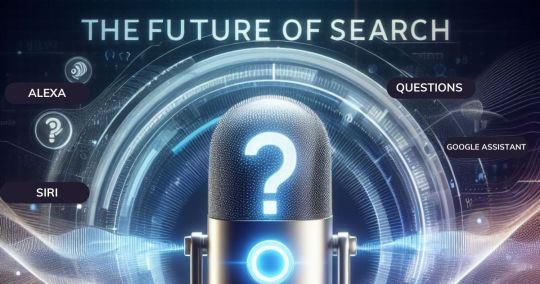
2. Leverage Artificial Intelligence (AI) in Your Campaigns
Artificial Intelligence is transforming the way businesses approach digital marketing. From chatbots to data analytics, AI enables companies to better understand customer behavior, predict trends, and create highly personalized marketing experiences. AI-driven tools can automate tasks like email segmentation, content recommendations, and customer service interactions, allowing businesses to save time while improving engagement.
For example, AI-powered chatbots can enhance customer experiences by providing instant responses to common inquiries, even outside of business hours. AI can also help businesses optimise their ad campaigns by analysing large amounts of data and suggesting improvements based on performance.
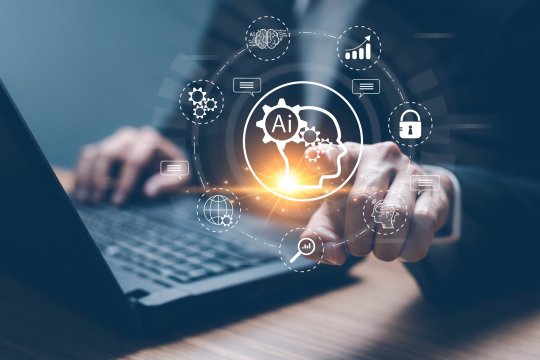
3. Prioritise Video Marketing
Video content is now an indispensable part of any digital marketing strategy. By 2024, it’s estimated that video will account for 82% of all online traffic. This makes video marketing one of the most effective ways to capture your audience’s attention. Whether it’s through YouTube, Instagram Stories, TikTok, or live streaming, video allows you to engage customers in ways that text or images simply can’t.
To maximise the impact of your video content, focus on creating short, engaging videos that are informative and entertaining. Live video is also becoming more popular, with platforms like Instagram and Facebook offering live streaming capabilities that allow you to interact with your audience in real-time. Demonstrating your products or services, hosting Q&A sessions, or sharing behind-the-scenes content can help build a more personal connection with your audience.
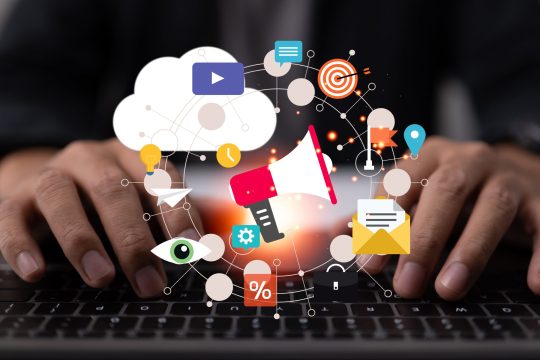
4. Collaborate with Social Media Influencers
Influencer marketing is no longer just a trend—it’s a powerful tool for businesses to increase brand awareness and drive conversions. By partnering with influencers who have a loyal following, you can leverage their credibility and reach new audiences. In 2024, micro-influencers (influencers with smaller, highly engaged audiences) are expected to play a more significant role, as they often have more authentic interactions with their followers compared to larger influencers.
When selecting influencers to collaborate with, ensure they align with your brand’s values and target demographic. Authenticity is key—today’s consumers can easily spot a partnership that feels forced or inauthentic. Focus on building long-term relationships with influencers rather than one-off promotions for more meaningful engagement.

5. Enhance User Experience (UX) on Your Website
User experience is central to the success of any digital marketing strategy. A poorly designed website can drive away potential customers and negatively impact your search engine rankings. Google places a strong emphasis on Core Web Vitals, which measure aspects like page load speed, interactivity, and visual stability.
As we move into 2024, it’s essential to ensure that your website is optimised for both speed and mobile friendliness. More than 50% of web traffic now comes from mobile devices, so if your site isn’t mobile-friendly, you could be losing a significant portion of your audience. Focus on providing a seamless, intuitive experience with easy navigation and fast load times to keep visitors engaged.

6. Master SEO: Focus on High-Quality Content
Search Engine Optimisation (SEO) is a long-standing digital marketing technique that continues to evolve. As Google’s algorithms become more sophisticated, the emphasis has shifted from keyword stuffing to creating high-quality, informative content. In 2024, businesses should focus on producing valuable, long-form content that addresses the needs and pain points of their audience.
To improve your SEO, conduct thorough keyword research and create content that provides in-depth answers to commonly asked questions in your industry. Use internal linking to guide visitors to other relevant pages on your website and ensure that your content is updated regularly to remain fresh and relevant.
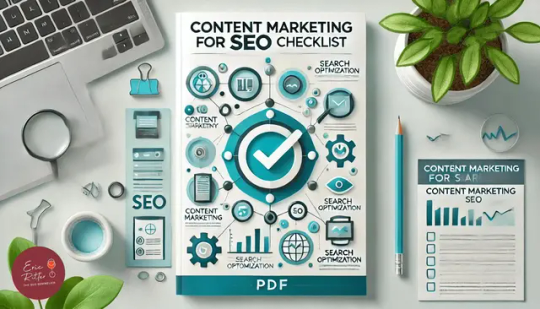
7. Invest in Paid Advertising
While organic reach is still valuable, the rise of paid advertising offers a more direct way to target specific audiences. Platforms like Google Ads, Facebook, and Instagram allow businesses to use highly targeted advertising to reach potential customers based on demographics, interests, and online behaviour.
In 2024, consider experimenting with a mix of search ads, social media ads, and display ads to diversify your strategy. Retargeting campaigns, which focus on users who have already visited your site, are particularly effective at converting potential customers who didn’t purchase their first visit.

8. Use Email Marketing to Nurture Leads
Email marketing remains one of the most effective ways to nurture leads and maintain customer relationships. In 2024, personalisation will be key to running successful email campaigns. Use behavioural data to send personalised emails based on your audience’s past interactions with your brand. Whether it's a product recommendation, an abandoned cart reminder, or a birthday discount, personalising your emails can significantly improve open and conversion rates.
Additionally, focus on building your email list organically and create engaging, mobile-friendly templates that grab attention. Incorporate dynamic content that adapts to the recipient’s preferences to make your emails more relevant and engaging.
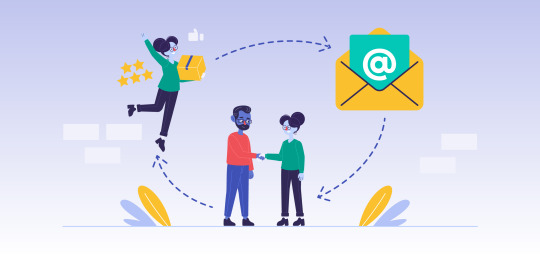
9. Incorporate User-Generated Content (UGC)
User-generated content (UGC) is a powerful form of social proof that can influence purchase decisions. Customers are more likely to trust the opinions of their peers than traditional advertising. Encourage your customers to share their experiences with your products or services on social media, and showcase UGC on your website and marketing channels.
UGC can take the form of reviews, testimonials, photos, and videos from customers. By featuring authentic content from real users, you can build trust with potential customers and foster a sense of community around your brand.
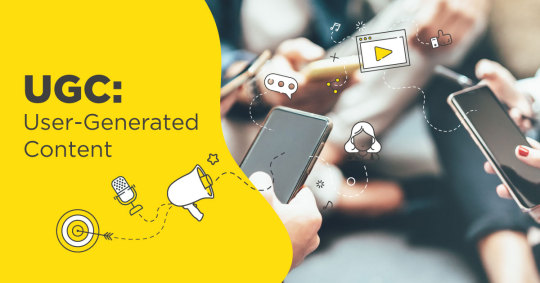
10. Utilise Data Analytics to Drive Decisions
Data analytics is the foundation of a successful digital marketing strategy. By tracking the performance of your campaigns, you can make data-driven decisions that improve your ROI. Tools like Google Analytics, social media insights, and marketing automation platforms can provide valuable information on how your audience interacts with your content, website, and ads.
In 2024, focus on real-time analytics to track user behaviour and adjust your marketing strategies on the fly. Use data to identify trends, test new ideas, and continuously refine your approach to maximise results.

Conclusion
Digital marketing is an ever-changing field, and staying ahead of the trends is essential for business growth. By incorporating these 10 essential digital marketing tips, you’ll be well-prepared to navigate the challenges of 2024 and beyond. From optimising for voice search and embracing AI to mastering video marketing and enhancing your SEO efforts, each of these strategies will help you boost your business and stay ahead of the competition. Start implementing these tips today and watch your business soar to new heights in the digital world!
5 notes
·
View notes
Text
How-To IT
Topic: Core areas of IT
1. Hardware
• Computers (Desktops, Laptops, Workstations)
• Servers and Data Centers
• Networking Devices (Routers, Switches, Modems)
• Storage Devices (HDDs, SSDs, NAS)
• Peripheral Devices (Printers, Scanners, Monitors)
2. Software
• Operating Systems (Windows, Linux, macOS)
• Application Software (Office Suites, ERP, CRM)
• Development Software (IDEs, Code Libraries, APIs)
• Middleware (Integration Tools)
• Security Software (Antivirus, Firewalls, SIEM)
3. Networking and Telecommunications
• LAN/WAN Infrastructure
• Wireless Networking (Wi-Fi, 5G)
• VPNs (Virtual Private Networks)
• Communication Systems (VoIP, Email Servers)
• Internet Services
4. Data Management
• Databases (SQL, NoSQL)
• Data Warehousing
• Big Data Technologies (Hadoop, Spark)
• Backup and Recovery Systems
• Data Integration Tools
5. Cybersecurity
• Network Security
• Endpoint Protection
• Identity and Access Management (IAM)
• Threat Detection and Incident Response
• Encryption and Data Privacy
6. Software Development
• Front-End Development (UI/UX Design)
• Back-End Development
• DevOps and CI/CD Pipelines
• Mobile App Development
• Cloud-Native Development
7. Cloud Computing
• Infrastructure as a Service (IaaS)
• Platform as a Service (PaaS)
• Software as a Service (SaaS)
• Serverless Computing
• Cloud Storage and Management
8. IT Support and Services
• Help Desk Support
• IT Service Management (ITSM)
• System Administration
• Hardware and Software Troubleshooting
• End-User Training
9. Artificial Intelligence and Machine Learning
• AI Algorithms and Frameworks
• Natural Language Processing (NLP)
• Computer Vision
• Robotics
• Predictive Analytics
10. Business Intelligence and Analytics
• Reporting Tools (Tableau, Power BI)
• Data Visualization
• Business Analytics Platforms
• Predictive Modeling
11. Internet of Things (IoT)
• IoT Devices and Sensors
• IoT Platforms
• Edge Computing
• Smart Systems (Homes, Cities, Vehicles)
12. Enterprise Systems
• Enterprise Resource Planning (ERP)
• Customer Relationship Management (CRM)
• Human Resource Management Systems (HRMS)
• Supply Chain Management Systems
13. IT Governance and Compliance
• ITIL (Information Technology Infrastructure Library)
• COBIT (Control Objectives for Information Technologies)
• ISO/IEC Standards
• Regulatory Compliance (GDPR, HIPAA, SOX)
14. Emerging Technologies
• Blockchain
• Quantum Computing
• Augmented Reality (AR) and Virtual Reality (VR)
• 3D Printing
• Digital Twins
15. IT Project Management
• Agile, Scrum, and Kanban
• Waterfall Methodology
• Resource Allocation
• Risk Management
16. IT Infrastructure
• Data Centers
• Virtualization (VMware, Hyper-V)
• Disaster Recovery Planning
• Load Balancing
17. IT Education and Certifications
• Vendor Certifications (Microsoft, Cisco, AWS)
• Training and Development Programs
• Online Learning Platforms
18. IT Operations and Monitoring
• Performance Monitoring (APM, Network Monitoring)
• IT Asset Management
• Event and Incident Management
19. Software Testing
• Manual Testing: Human testers evaluate software by executing test cases without using automation tools.
• Automated Testing: Use of testing tools (e.g., Selenium, JUnit) to run automated scripts and check software behavior.
• Functional Testing: Validating that the software performs its intended functions.
• Non-Functional Testing: Assessing non-functional aspects such as performance, usability, and security.
• Unit Testing: Testing individual components or units of code for correctness.
• Integration Testing: Ensuring that different modules or systems work together as expected.
• System Testing: Verifying the complete software system’s behavior against requirements.
• Acceptance Testing: Conducting tests to confirm that the software meets business requirements (including UAT - User Acceptance Testing).
• Regression Testing: Ensuring that new changes or features do not negatively affect existing functionalities.
• Performance Testing: Testing software performance under various conditions (load, stress, scalability).
• Security Testing: Identifying vulnerabilities and assessing the software’s ability to protect data.
• Compatibility Testing: Ensuring the software works on different operating systems, browsers, or devices.
• Continuous Testing: Integrating testing into the development lifecycle to provide quick feedback and minimize bugs.
• Test Automation Frameworks: Tools and structures used to automate testing processes (e.g., TestNG, Appium).
19. VoIP (Voice over IP)
VoIP Protocols & Standards
• SIP (Session Initiation Protocol)
• H.323
• RTP (Real-Time Transport Protocol)
• MGCP (Media Gateway Control Protocol)
VoIP Hardware
• IP Phones (Desk Phones, Mobile Clients)
• VoIP Gateways
• Analog Telephone Adapters (ATAs)
• VoIP Servers
• Network Switches/ Routers for VoIP
VoIP Software
• Softphones (e.g., Zoiper, X-Lite)
• PBX (Private Branch Exchange) Systems
• VoIP Management Software
• Call Center Solutions (e.g., Asterisk, 3CX)
VoIP Network Infrastructure
• Quality of Service (QoS) Configuration
• VPNs (Virtual Private Networks) for VoIP
• VoIP Traffic Shaping & Bandwidth Management
• Firewall and Security Configurations for VoIP
• Network Monitoring & Optimization Tools
VoIP Security
• Encryption (SRTP, TLS)
• Authentication and Authorization
• Firewall & Intrusion Detection Systems
• VoIP Fraud DetectionVoIP Providers
• Hosted VoIP Services (e.g., RingCentral, Vonage)
• SIP Trunking Providers
• PBX Hosting & Managed Services
VoIP Quality and Testing
• Call Quality Monitoring
• Latency, Jitter, and Packet Loss Testing
• VoIP Performance Metrics and Reporting Tools
• User Acceptance Testing (UAT) for VoIP Systems
Integration with Other Systems
• CRM Integration (e.g., Salesforce with VoIP)
• Unified Communications (UC) Solutions
• Contact Center Integration
• Email, Chat, and Video Communication Integration
2 notes
·
View notes
Text

Lets Ziv: Innovating Product Design with a Woman-Owned Vision in USA
Introduction
When it comes to innovative solutions in the realm of product management, agencies play a crucial role in turning concepts into reality. Among these agencies, woman-owned businesses are carving a niche with their distinctive perspectives and strategies. Enter Lets Ziv, a groundbreaking company that’s redefining product design and management.
What is a Product Management Agency?
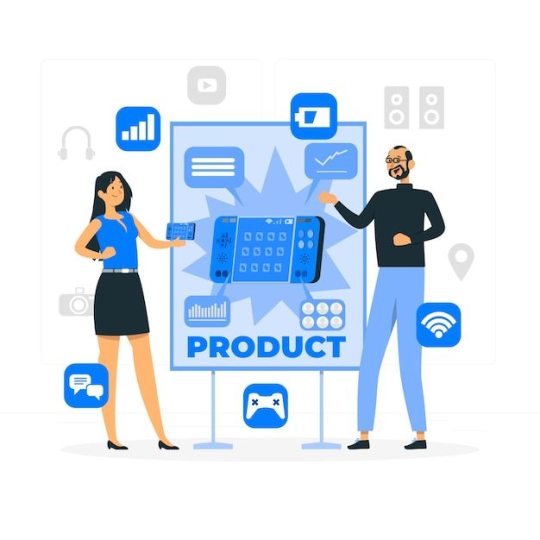
A product management agency bridges the gap between conceptual ideas and market-ready products. These agencies provide end-to-end services, including design, development, and strategy execution. By ensuring seamless collaboration across teams, they help businesses innovate efficiently and effectively.
The Importance of Woman-Owned Agencies
Woman Owned Product Design Agency bring diversity to the table, fostering inclusive solutions. Studies consistently show that diverse leadership teams outperform their counterparts in innovation and financial success. These agencies challenge industry norms and inspire change, proving that gender equity is not just ethical but also profitable.
Meet Lets Ziv: Woman-Owned Excellence
Founded with a passion for creativity and collaboration, Lets Ziv is a woman-owned product design agency dedicated to delivering exceptional results. Their mission? To empower businesses with innovative, user-friendly designs that resonate with audiences worldwide.
Core Services Offered by Lets Ziv
Product Design and Development: Lets Ziv crafts products that blend aesthetics with functionality.
Market Research and Strategy: By understanding consumer behavior, the agency tailors strategies to align with market trends.
Project Management Solutions: From ideation to launch, Lets Ziv ensures smooth project execution.
Unique Approach to Product Design
At Lets Ziv, the focus is always on the user. By leveraging advanced tools like AI and UX research, the agency creates products that not only meet but exceed user expectations.
Empowering Women in Product Management
Lets Ziv stands out as a beacon of empowerment. Through mentorship programs and partnerships, the agency nurtures aspiring women in tech, ensuring that talent knows no gender.
Why Choose Lets Ziv?
What sets Lets Ziv apart is their commitment to innovation and a client-first approach. Their tailored solutions ensure that every project is unique, impactful, and aligned with client goals.
Key Projects and Achievements
Lets Ziv has spearheaded numerous projects across industries, earning accolades for their designs and contributions to product innovation.
Challenges Faced by Woman-Owned Agencies
Despite their contributions, woman-owned agencies often face challenges such as bias and limited access to funding. Lets Ziv navigates these hurdles with resilience and creativity.
How Lets Ziv Overcomes Challenges
Through strategic planning, networking, and an unwavering commitment to quality, Lets Ziv continues to thrive, setting an example for others in the industry.
Sustainability in Product Management
Incorporating eco-friendly practices, Lets Ziv ensures that their designs are sustainable, proving that innovation can coexist with responsibility.
Future of Product Design Agencies
The future is bright for woman-owned product design agencies. With a growing emphasis on diversity and sustainability, companies like Lets Ziv are poised to lead the industry.
Collaborating with Lets Ziv
Partnering with Lets Ziv means embarking on a journey of innovation. Clients can expect transparent communication, expert guidance, and exceptional results.
Conclusion
Lets Ziv exemplifies the power of woman-owned businesses in transforming industries. With their innovative approach to product design, they are not just building products—they are shaping the future.
FAQs
What services does Lets Ziv offer? Lets Ziv specializes in product design, market research, and project management, providing end-to-end solutions for businesses.
Why choose a woman-owned agency like Lets Ziv? Woman-owned agencies bring unique perspectives and foster inclusive, innovative solutions, as demonstrated by Lets Ziv’s achievements.
How does Lets Ziv ensure sustainability? The agency integrates eco-friendly practices into its designs, focusing on long-term environmental and business value.
Can Lets Ziv handle projects in various industries? Yes, Lets Ziv has a diverse portfolio, showcasing their adaptability and expertise across multiple sectors.
What makes Lets Ziv unique? Lets Ziv stands out for its user-centric designs, innovative strategies, and commitment to empowering women in the tech industry.
#Woman Owned Product Design Agency#Product Management Agency#Product management company#product desgin company#LetsZiv#ProductManagement#WomanOwnedBusiness#ProductDesign#Innovation#DiversityInLeadership#SustainableDesign#EmpoweringWomen#CreativeSolutions#UserCentricDesign#BusinessInnovation#WomenInTech#LeadershipMatters#ProductDevelopment#InclusiveInnovation
2 notes
·
View notes